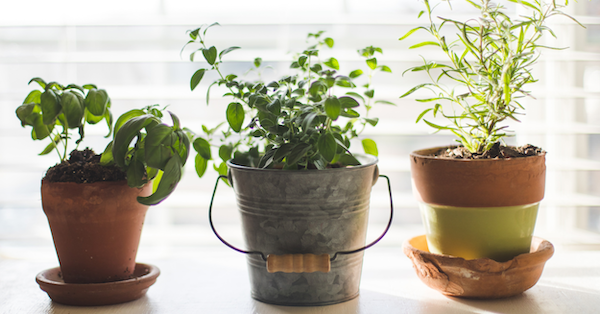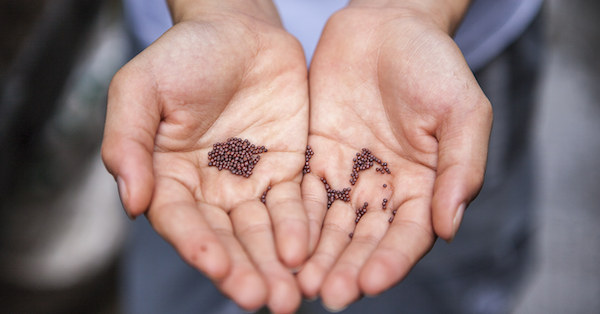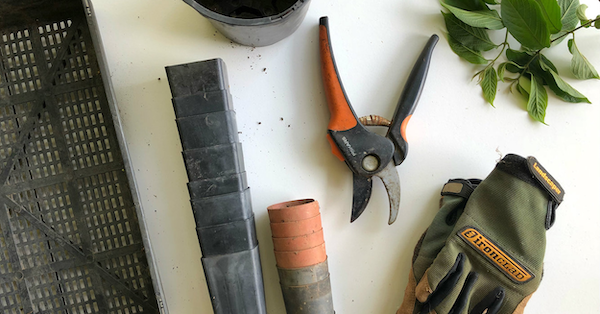Published on
Spring is the perfect time to garden: an activity that can be soothing and nourishing, to do alone or with your loved ones. The good news is that you don’t need a 50-hectare plot of land to do it. A simple balcony can do the trick.
Here are some tips on how to transform a small space into an environmentally friendly source of healthy food, to make gardeners of all ages proud.
Tip #1: Properly assess your space
An important first step for planning your garden is to evaluate the amount of sunlight that shines on your garden area. Many people overestimate the amount of sun a plant will receive, especially when the garden is on a balcony where walls, the roof and other obstacles can block those precious rays.
Over the course of a day, take note of when the sun begins to shine on your space, as well as when it stops.
Basil, chives, parsley, mint and several other herbs do very well in the shadiest of spots. The same goes for spinach, cabbage, dwarf beans and radishes.
Also factor in the wind (certain vegetables and herbs tolerate it better than others) and the indirect heat that your balcony or other surfaces can emit near your plants.

Tip #2: Choose your containers well
An impressive array of objects can be repurposed as containers for your soon-to-be plants: an old untreated wooden crate, a wicker basket, geotextile containers and so on. Otherwise, clay, plastic and stoneware pots will do the trick. And if you’re a do-it-yourselfer, there are a number of web tutorials that can help you build your own. You can also get your kids involved in making and decorating them!
That said, there are certain key points that you must take into consideration when choosing your containers.
They must allow water to drain through one or more holes and they must be a decent size (ideally 25 cm high and more) to enable the plant to grow easily, to keep reasonably moist, to resist temperature variations and to get the nutrients it needs to remain healthy.
To recap: the larger the container the better, and water must be able to drain easily. If the container is airtight, get out your drill and make your own holes!
Tip #3: Quality soil makes all the difference!
Planting in the right type of soil is essential for a healthy garden. In fact, it’s often the key to success!
Traditional garden soil is composed of too fine particles that stick together, so it is not suitable for pot gardening because it will suffocate your plants. It is therefore preferable to make your own potting soil. Use this simple recipe to prepare the soil for your pots:
- 2/3 potting soil (mixture of sphagnum peat moss, compost, perlite and lime to adjust the pH, which can be found ready for use at hardware stores)
-1/3 compost

Tip #4: Choose your plants carefully, and opt for organic seeds where possible
Almost any vegetable or herb can grow in a pot on your balcony. However, it is important to choose plants that fit well with the environment in which they will grow as mentioned in point #1 (sunshine, wind, climate, container, soil, etc.) and to promote biodiversity as much as possible.
Regroup plants with the same sunlight/water needs to make things easier.
You can also opt for organic seeds, which cost a fraction of what you’d pay for a plant in a garden center (whose growing conditions are unknown).
The good news is that you can order local seeds online! In doing so, you’ll be supporting local supply chains, helping to preserve heritage varieties of plants and lessening your dependence on the agri-food industry.
Here are four Quebec companies where you can order seeds online:
Jardin de l’Écoumène: a seed artisan and nursery selling ‘Québec Vrai’ certified organic seeds.
Coop Tournesol: a cooperative that grows certified organic vegetables, seeds, plants, tisanes, herbs and flowers.
Terre promise: a local seed artisan that produces ecological seeds from rare or endangered vegetable varieties.
Jardins du grand Portage: a Montreal-based company carrying an inventory of naturally or organically grown vegetable seeds.

Tip #5: Sketch it out
This all seems a bit overwhelming? There are indeed quite a few things to consider before getting started. Sketching your idea will help you organize your space and plan your purchases for your new garden. Things always look clearer when you put pen to paper!
Reading suggestions to take you further
If you’re interested in diving deeper and learning more about this type of gardening, Bertrand Dumont’s Le potager en pot (Éditions MultiMondes) is a fairly comprehensive yet easy-to-read resource. It also contains technical datasheets on a number of vegetables and herbs.
It is also available in digital format on the Les libraires indépendantes du Québec portal.
Happy gardening!
